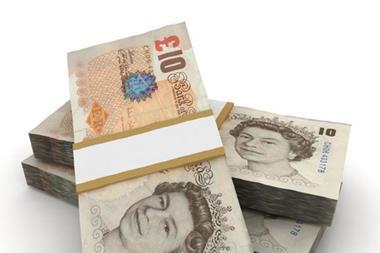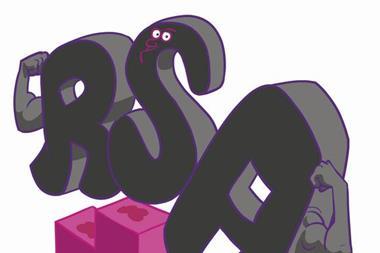The BBC did Boris Johnson and Stephen Fry. Now, Insurance Times delves into the roots of today’s insurance giants
Andy Haste is still in the game. The chief executive of the UK’s biggest commercial insurer, RSA, might have failed in his £5bn swoop on Aviva’s general insurance arm, but he will not be denied again. At this month’s nine-month results announcement, Haste insisted that there were “targeted acquisitions” to come, including in the UK.
And when it comes to mergers and acquisitions, RSA has form. It was the £5.4bn, 50,000-employee mega-combination of Royal Insurance and Sun Alliance Group 14 years ago that kicked off a swath of huge deals in the sector.
Around the turn of the millennium, there were typically 20 or more deals of £40m-plus every year. But deal-making dropped off the cliff in 2009, with investors and chief executives growing ever more cautious in the wake of the worst slump since the Great Depression.
Slowly, however, optimism is returning to the insurance sector. The likes of Haste are eyeing up juicy deals, with big brands like Churchill and RBSI’s Direct Line particularly interesting to those with a bit of spare cash.
Resolution’s £2.75bn reverse takeover of AXA’s life and pensions business, announced in June, looks set to be just the beginning.
Yet there are plenty in the sector who question whether the big mergers and big-ticket acquisitions really work. “Insurance doesn’t have enormous economies of scale,” sighs one industry figure, meaning that there is rarely enough duplication of work that can be taken out of a combined entity to reduce costs.
“The deals are successful for the investment bankers because they get their fees. But manifestly almost no M&A deals produce the savings that are hoped for, and there is the major cost of converting one company’s systems and records to the other.”
Here, Insurance Times puts this argument to the test, using the benefit of hindsight to trace the family trees of the biggest UK insurers and the unions from which they were born.
Royal Insurance and Sun Alliance
Completed in May 1996, this was the daddy of the late 1990s merger boom. Sun Alliance chief executive Roger Taylor talked of “significantly enhanced earnings”, while one analyst was reported at the time as saying the deal was “the best thing to happen to the UK insurance market in 20 years”.
The combined group promised to be a mean, lean machine, with 5,000 overlapping jobs taken out. Shame, then, that the new boards couldn’t make tough decisions about who to drop from the leadership team.
Taylor became executive deputy chairman of the new entity, while opposite number Richard Gamble became chief executive.
“The joke was that they went in two by two,” recalls Panmure Gordon analyst Barrie Cornes. “These were two senior management teams that tried to exist side by side. The merger was deemed to have failed as they dilly-dallied trying to take costs out of the business.”
Taylor and Gamble disagreed over strategy and ended up squabbling. “Rather than being about best of breed, ultimately RSA was rocked by being the Richard and Roger show,” says one insurance insider. “The cost savings were half-baked, absolutely nowhere near where they should have been.”
Within two years, Bob Mendelsohn was at the helm, admitting that two bosses was not an ideal system but praising the duo for “smash[ing] the two companies together quickly”.
By 1999, the combination was failing to deliver and RSA was frequently mooted as a takeover target for even bigger rivals, with CGU even coming in with an initial offer of £10bn. Shareholders were angry as their stock lost value; Mendelsohn’s commitment to the cause was even doubted.
Shore Capital analyst Eamonn Flanagan admits that, at first, he thought the businesses would be “very complementary”, as Sun Alliance was strong in personal lines and Royal was very big in commercial property. “You look at them as two blank pieces of paper and you think that putting them together would be a great thing.”
Instead the company became known for job cuts, rivalry at the top and failure to get the cost savings that had been promised. In its defence, the group has retained its independence despite all of those problems, but the fact remains that, nearly a decade and a half on, the company that started out as an entity worth nearly £5.5bn has a market value of £4.6bn.
Deal rating: 3/10
Commercial Union and General Accident
Commercial Union and General Accident watched closely as events unfolded at RSA. The top dogs at both organisations wanted to learn what not to do ahead of their own launch day: 7 July 1998.
The new CGU, the result of a £7.1bn stock swap, would sell commercial, personal, life and specialty products. US chief executive Bob Gowdy claimed the goal was no less than “to become the premier independent agency and broker property and casualty company in the USA”.
However, tornados and ice storms in North America soon combined with floods in Britain to take the gloss off the deal. In August 1998, CGU announced a pre-tax loss of £466m for the first half of the year.
Immediate losses are always possible in the wake of a merger, with redundancies and combining administration systems all costly. Yet losses related to the merger accounted for only £70m of that £466m figure.
More happily, CGU had already identified more cost savings by the time of the announcement – increasing its estimate from £225m to £270m, and later to as high as £325m.
“They allegedly learned the lessons of RSA – took hard decisions and decided that there was going to be one chief executive [Bob Scott, who had been General Accident’s boss],” says one analyst.
Commercial Union was represented on the board by Pehr Gyllenhammar, who held a traditional chairman’s role.
However, the company only survived in its new form for two years, before an even bigger merger took place. “We never actually got to see if those cost savings came along – the next merger took place before we got to the point where we could see if they were working or not,” the analyst adds.
Despite this, there were signs, argues Panmure Gordon’s Cornes, that the combination “was only as successful as RSA”.
He adds: “There were shortcomings with the IT systems. There was great talk of a common IT platform, yet years and years later we are told at analyst meetings that this was never really achieved at the time, so we’re going to do this now.”
Shore’s Flanagan agrees that the merger was “an odd one”. He argues: “General Accident has short-tailed business, like motor and household, and the tail book was longer in Commercial Union. This looks complementary, but it actually diluted both of them.”
Deal rating: 5/10
CGU and Norwich Union
Even if CGU’s cost savings weren’t materialising, chief executive Scott remained a believer in the power of mergers. Unveiling CGU’s blockbuster £18.9bn deal with Norwich Union in February 2000, he gushed: “It’s a transaction that will create value and the opportunity to push into Europe.” However, he admitted: “Last time around, we were flying a bit more blind.”
The latest deal targeted cost savings of around £250m a year and created a group with £190bn in funds under management and operating profit of £1.5bn. Immediately, Scott put CGU’s troubled US operations up for sale and took over as head of the new group.
Meanwhile, Norwich Union had been going through its own changes in the preceding years, demutualising in 1997 and raising £1.85bn for investors.
The group changed its name to Aviva, but there was no laughter when the share price halved within 18 months. “It was only really last year that the systems of Norwich Union and the old CGU actually merged. That gives you an idea [how successful the deal was],” says Keefe, Bruyette & Woods (KBW) analyst Chris Hitchings. “The net effect is that you have a large dysfunctional business that doesn’t produce very good returns for shareholders and has lousy customer service.”
Flanagan argues that, ultimately, the group was a takeover by Norwich Union. Most of the key senior staff were from Norwich Union, with its chief executive, Richard Harvey, soon taking over from Scott.
Those were big shoes to fill, as New Zealander Scott was considered a legend in the industry. “They picked the wrong people to run the group,” claims one critic. “The Norwich Union people were relatively new, relatively inexperienced. For example, the management of the European business expansion through distribution agreements was a bit naive, the price was wrong – too high.”
Yet Harvey stayed in charge until 2007, when he quit his £1.9m-a-year job and swapped a townhouse in Chelsea for charity work in Africa. By then he had added RAC and annuity provider AmerUS to the Aviva stable. Harvey argued that the acquisition strategy had put Aviva in the same league as France’s AXA.
Despite the criticisms, it is clear from the finances that Harvey left Aviva in good shape. His final full-year results saw worldwide sales soar 20% to more than £31bn and the group now had 35 million customers.
However, Aviva struggled during the downturn, with an £885m loss in 2008. It is back in profit now, though, at least partly as a result of a strong balance sheet and diversified business.
Deal rating: 6/10
AXA and Guardian Royal Exchange
More of an out-and-out takeover than a merger, AXA nevertheless intrigued the market when it snapped up motor, home and healthcare insurer Guardian Royal Exchange (GRE) for £3.4bn in 1999. The move turned UK subsidiary Sun Life and Provincial Holdings into the country’s third-biggest general insurer.
In a statement, AXA said: “The acquisition will enable Sun Life and Provincial Holdings to achieve critical mass in the consolidating UK and Irish insurance markets, which should lead to significant efficiency improvements.”
More than a decade on, KBW’s Hitchings doubts that AXA feels it met its ambitions: “If AXA knew then what it knows now, would it go back and do that deal again? Probably not.”
Certainly, AXA was buoyant in the immediate aftermath of the deal. By March 2000, it claimed that cost savings were running 70% ahead of its initial estimates. Also, after selling certain units of the business, the purchase price effectively dropped to just £841m. For a group as big as AXA, that was small change for massive exposure to the UK market.
However, by 2002 AXA had decided that the UK wasn’t really working, particularly as it was one of the insurance markets that suffered quite badly in the wake of the 9/11 terrorist attacks.
The company announced that it would reduce expenditure in the UK by more than E220m (£142m at 2002 prices). IT spending was cut and 700 jobs went, while it had already scaled back the motor book it had inherited in the GRE deal.
What AXA discovered was that GRE had under-reserved several of its businesses, meaning that it had to invest hundreds of millions of euros to shore it up. Due diligence that takes place when a deal is under discussion does not always pick up every problem.
The best testimony that the deal was a duff one, though, comes from AXA itself. In 2004, chief executive Henri de Castries admitted that the company had overpaid for GRE and attacked the country’s entire regulatory system.
“In the UK property and casualty market, we inherited very bad business,” he said. “With a tremendous amount of red tape, Britain is killing its own insurance industry.” IT
Deal rating: 2/10
Mark Leftly is deputy business editor at The Independent on Sunday
Hosted by comedian and actor Tom Allen, 34 Gold, 23 Silver and 22 Bronze awards were handed out across an amazing 34 categories recognising brilliance and innovation right across the breadth of UK general insurance.














































No comments yet